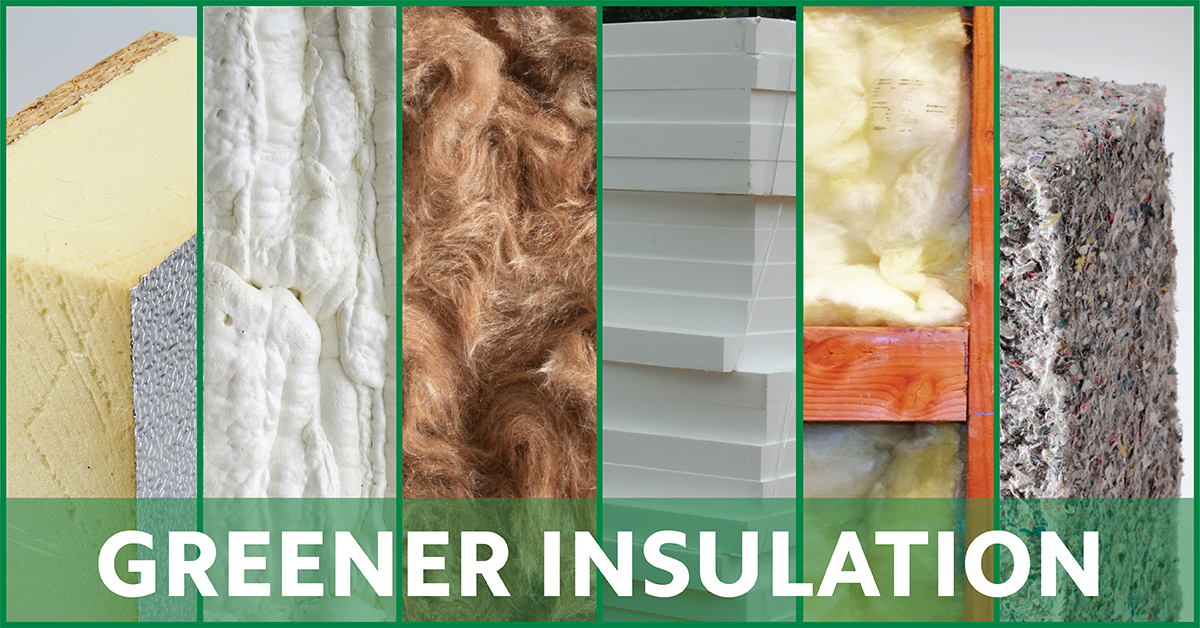by Brianna Crandall — July 27, 2016 — Green Seal, the independent nonprofit certifier of sustainable products and services, launched its new Architectural Insulation Standard (GS-54) yesterday. The standard is designed to make it easier for the market to identify green insulation products that work and protect human as well as environmental health. It sets challenging yet achievable requirements that reflect environmental leadership among products currently available or emerging in the United States.
GS-54 is said to be the only up-to-date insulation standard developed specifically for the U.S. market. Its criteria cover significant impacts across the life-cycle stages of several types of insulation. It also provides a clear and specific guideline for product design.
The major requirements in the standard include:
- ASTM performance specifications
- Health and environmental requirements for recovered content, global warming potential, VOC (volatile organic compound) emissions, and restricted substances
- Packaging requirements
- Consumer information and labeling requirements for installation instructions, safety procedures, protective equipment, hazard warnings, and product stewardship
The standard covers various types of products, including blankets, boards, blown-in, foams, and reflective insulation. It provides criteria for materials such as fiberglass, mineral wool, polyurethanes, polystyrenes, cellulose, fabrics, and others that provide thermal resistance.

The GS-54 standard criteria cover significant impacts across the life-cycle stages of several types of insulation.
Compared with other choices on the market, Green Seal-certified insulation materials are said to deliver clear benefits, including:
- Reduced global warming impacts
- Strict limits on hazardous chemicals and VOC emissions
- Reduced waste and use of recycled content
- Protective measures including detailed installation instructions that protect the health of installers and building occupants
- Effective insulation that will provide:
- Energy savings
- Better air quality
- Greater comfort for building occupants
Green Seal President and CEO Arthur Weissman, Ph.D., pointed out:
More than 40 organizations and professionals concerned about insulation participated in the development of this leadership standard. These included representatives from the environmental, science, and health communities, industry trade groups, manufacturers, purchasers, government, NGO’s, and academia. This level of involvement suggests there is a real need for this standard’s guidelines on what makes insulation products more sustainable.
A lack of information available to purchasers and consumers about the sustainability of insulation, growing market trends, and the role insulation plays in green building were factors in the creation of the standard. According to the World Green Building Trends SmartMarket report, green building is experiencing accelerated global growth. Cost savings from energy efficiency, one of the main benefits of green building, depends heavily on insulation.
Ann Blake, Ph.D., an environmental and public health consultant who is recognized for her work creating a more sustainable global economy, explained:
Green Seal’s insulation standard criteria represent the environmental leadership choices that are currently available to purchasers. This new standard has successfully found the balance between where the industry is and where we would like it to be. These sustainability tools must be practical for mainstream purchasers to take action and to inspire the development of more environmentally preferable options.
Green Seal’s certification process based on its standards involves an in-depth review of product data and manufacturing procedures, including an on-site audit of manufacturing facilities. Periodic monitoring is required to maintain certification.
By achieving GS-54 certification, Green Seal says manufacturers:
- Provide insulation that is environmentally preferable over other products on the market;
- Earn the only ecolabel they need, the Green Seal;
- Clearly demonstrate their leadership in protecting personal and environmental health;
- Help purchasers easily identify their product as environmentally preferable; and
- Produce a product they can feel good about because it goes further to protect human health, including the health of those installing the product as well as of building occupants.
For purchasers and specifiers of insulation, this new certification:
- Makes it easier to identify products that work, and protect human as well as environmental health;
- Allows them to choose environmentally preferable products over other products on the market;
- Lets them know that the product has undergone a thorough evaluation by a trusted, third-party evaluator that includes a factory audit; and
- Aids them in purchasing a product they can feel good about because it goes further to protect human health, including the health of those installing the product as well as the occupiers of the building.
A free Webinar to learn more about GS-54 will be held on Tuesday, September 20, 3 p.m. – 4 p.m. (EDT) To sign up, go to the Sustainable Insulation Web page.
To learn more about green insulation and the health and environmental impacts of insulation, visit Green Seal’s Greener Insulation page. For those interested in a free download of the standard, or to apply for certification, visit the GS-54 Architectural Thermal Insulation Materials page.




